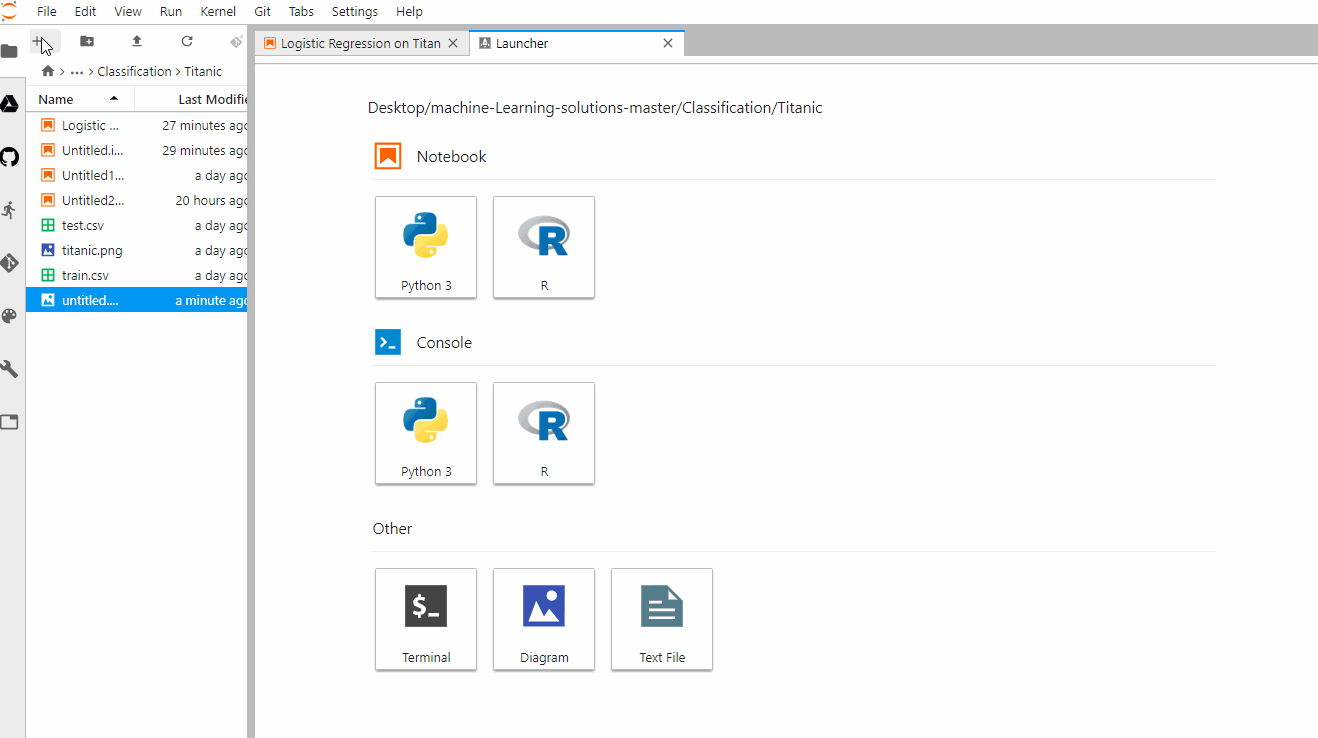

- Jupyterlab online how to#
- Jupyterlab online pdf#
- Jupyterlab online install#
- Jupyterlab online software#
- Jupyterlab online code#
You jump right in to examples of how to make basic charts, statistical charts, scientific charts, financial charts, maps, and 3-dimensional charts. Once you've installed, you can use our documentation in three main ways: Jupyterlab online install#
This Getting Started guide explains how to install plotly and related optional pages.
Jupyterlab online pdf#
exporting notebooks to PDF with high-quality vector images). QtConsole, Spyder, P圜harm) and static document publishing (e.g. Thanks to deep integration with our Kaleido image export utility, plotly also provides great support for non-web contexts including desktop editors (e.g. The plotly Python library is sometimes referred to as "plotly.py" to differentiate it from the JavaScript library. While the Jupyter desktop app is a step towards new updates, we have yet to evaluate the accessibility of using JupyterLabs on desktop as opposed to the webpage.The plotly Python library is an interactive, open-source plotting library that supports over 40 unique chart types covering a wide range of statistical, financial, geographic, scientific, and 3-dimensional use-cases.īuilt on top of the Plotly JavaScript library ( plotly.js), plotly enables Python users to create beautiful interactive web-based visualizations that can be displayed in Jupyter notebooks, saved to standalone HTML files, or served as part of pure Python-built web applications using Dash. Launch the JupyterLab App locally using:.
Jupyterlab online code#
This should be at the same level as the jupyterlab_app project source code
The server location should be jlab_server. Run the installer to install the JupyterLab App Server. Create the JupyterLab App Server installer using. Install dependencies and build JupyterLab App with. To install JupyterLab App mac, Linux or win, get the project source code: This comes with a command palette made into a floating window that appears on top of the JupyterLab workspace to enable users to quickly invoke a command while keeping the sidebar closed or switching sidebar panels. After the latest third release, JupyterLab has migrated to Jupyter Server, a new Jupyter project based on the server portion of the classic Notebook server. In fact, JupyterLab supports multiple languages and allows users to set their display language with Jupyter’s language pack. The company has also made it possible to install these without building JupyterLab with Node.js. The latest Jupyter comes with a new visual debugger with new ways of distributing and installing extensions as Python pip or Conda packages. It provides multiple views of documents with various editors/viewers to edit documents and more in real-time. Kernel-backed documents to enable code in any text file, including Python, R, LaTeX, etc. Code consoles that provide transient scratchpads for running code interactively. JupyterLab offers data scientists and developers notebooks, code, and data for efficient working. The most recent release of JupyterLab 3.0 supported multiple display languages, visual debugger, and more. Nevertheless, the safe consensus that has been reached is that JupyterLabs App would be an easily accessible resource for Python beginners. But Jupyter users are still warming up to the latest app while some have taken a positive approach, some are still contemplating the need for an independent app. Updates on the project can be found on GitHub and Jupyter Blog.Īccording to Lorena Barba, a mechanical and aeronautical engineer at George Washington University in Washington DC, Jupyter has emerged as a de-facto standard for data scientists. The new releases are just a baseline that the company plans on building on in the near future. The company has left Jupyter and Python enthusiasts excited to know more about the upcoming updates by claiming that ‘This is just the re-start’. 
The conda libraries are NumPy, scipy, pandas, ipywidgets and matplotlib. In the backend, JupyterLab is supported by Python libraries via a bundled conda Python environment.

The app runs the front-end of JupyterLab inside an embedded browser.
Jupyterlab online software#
JupyterLab’s desktop app is based on Electron, Github’s free and open-source software framework to build cross-platform apps. It can be installed on Debian and Fedora-based Linux, macOS and Windows operating systems through the system’s one-click installers. The JupyterLab App is still cross-platform like the notebook. ‘It was clear that if we weren’t going to build it, no one else would’: Jakub Jurovych, Deepnote Features of the desktop app:







 0 kommentar(er)
0 kommentar(er)
